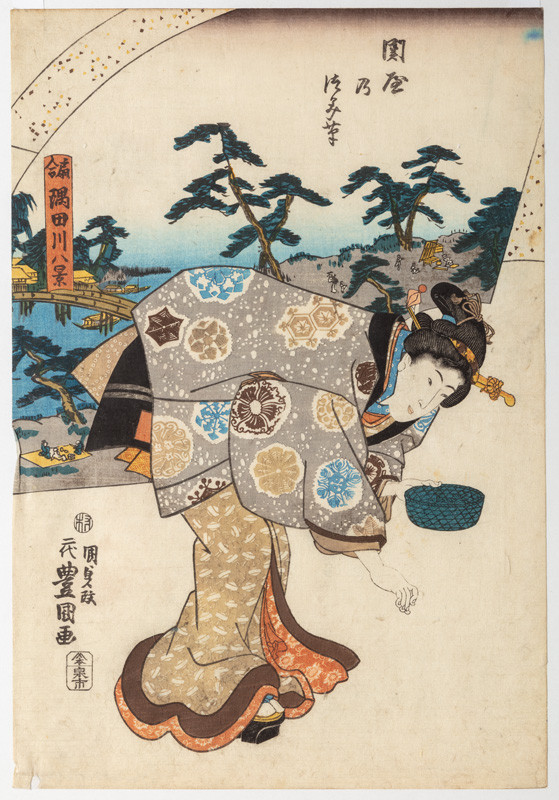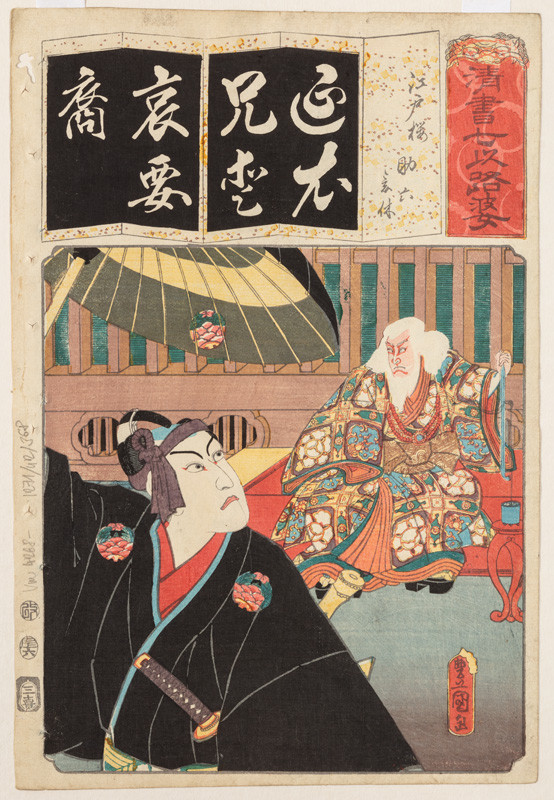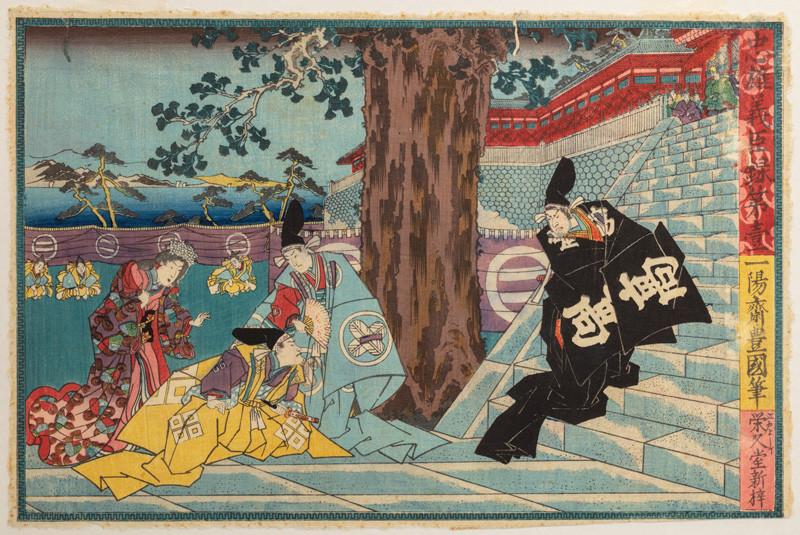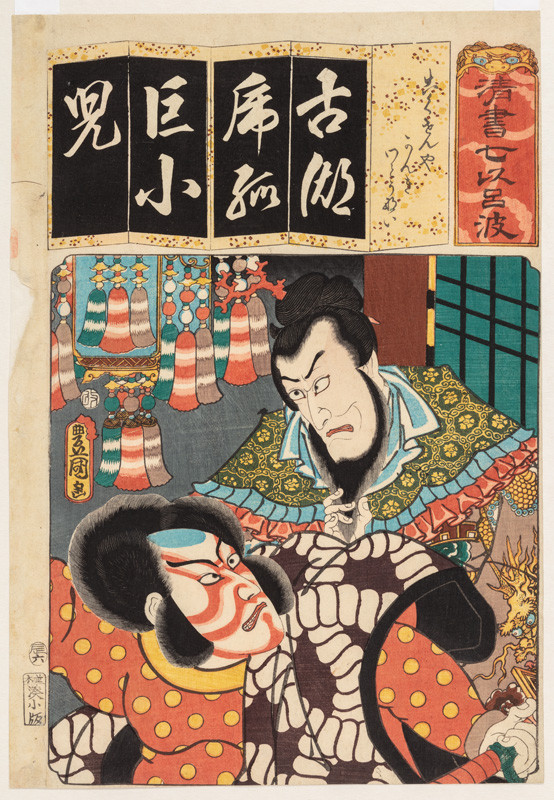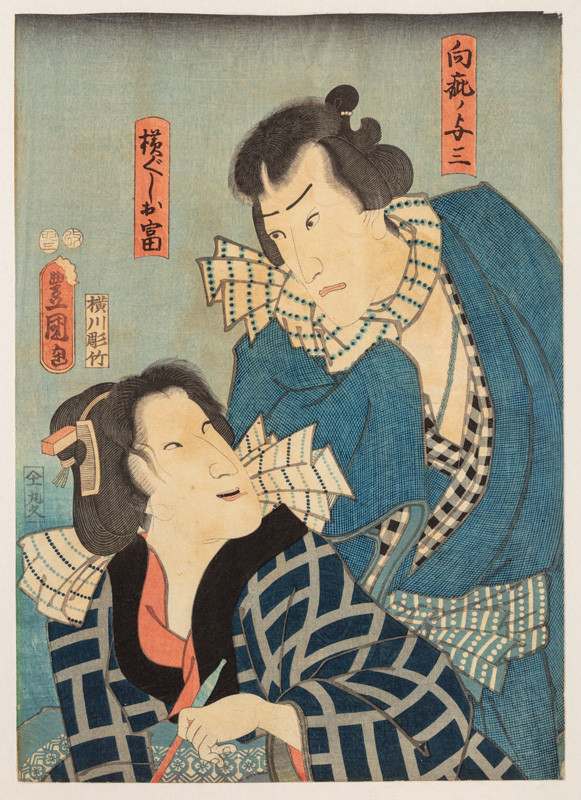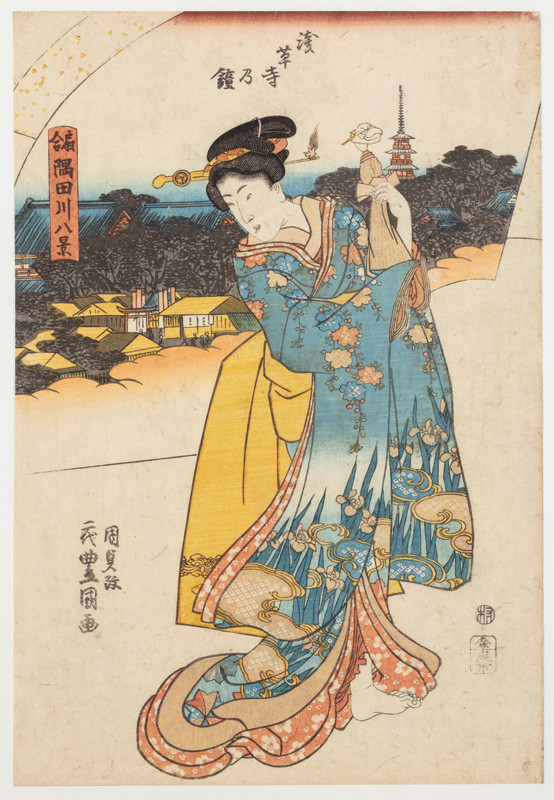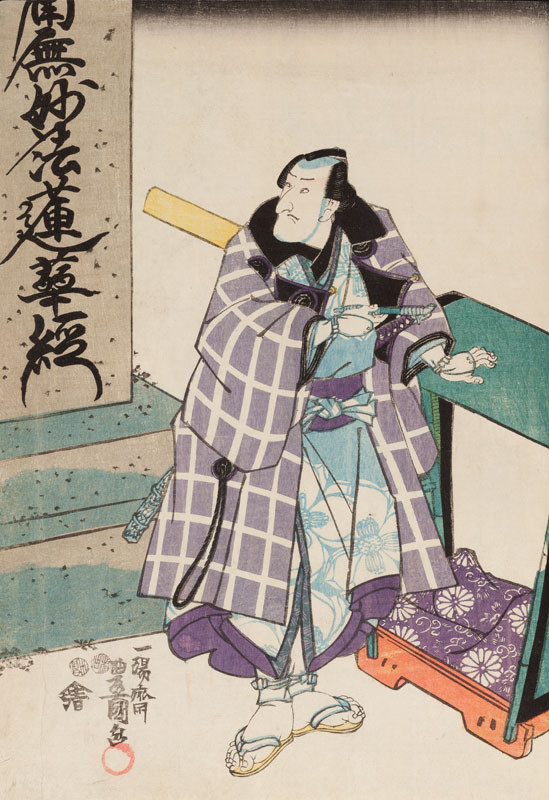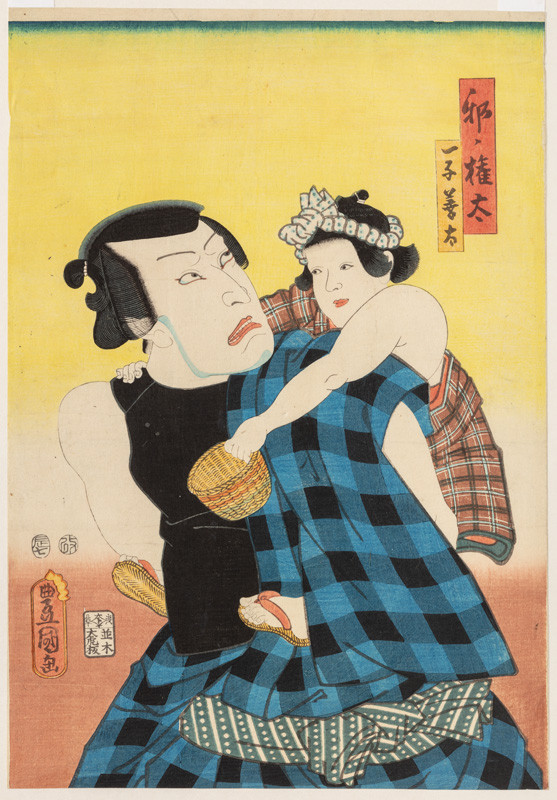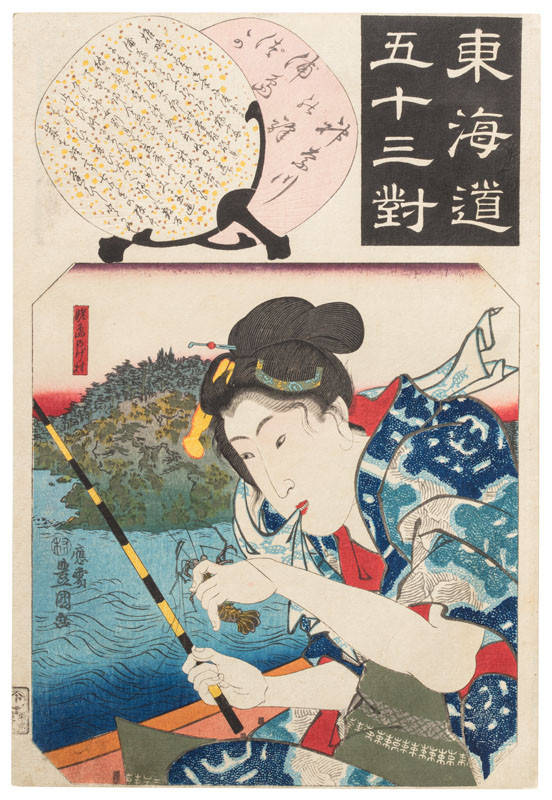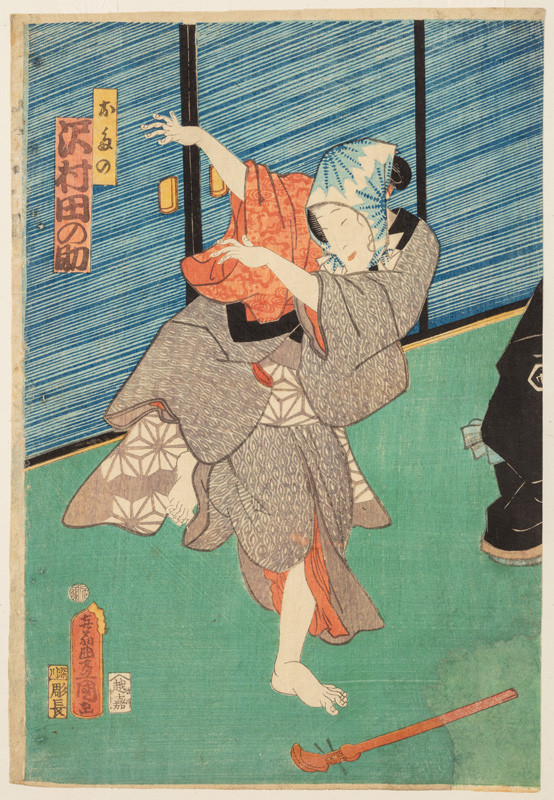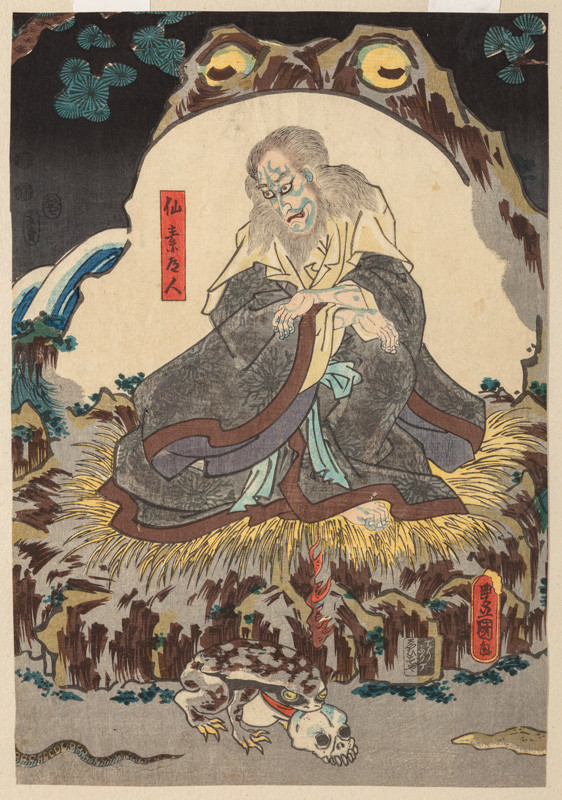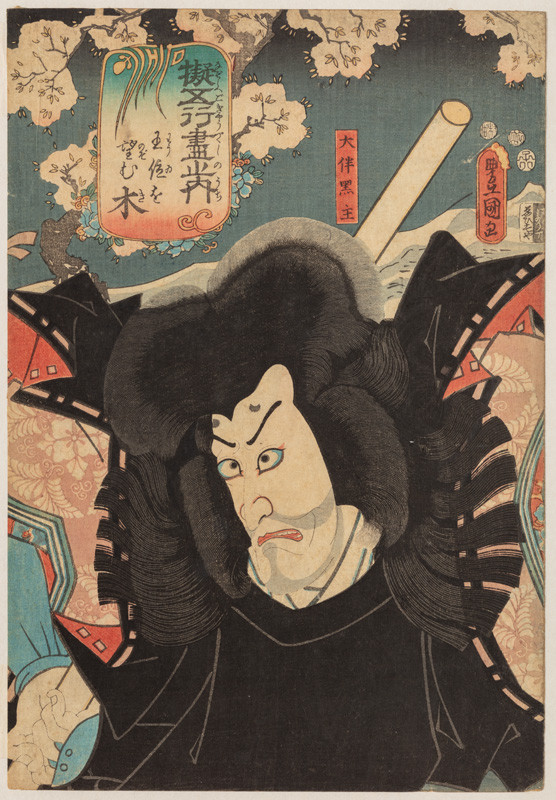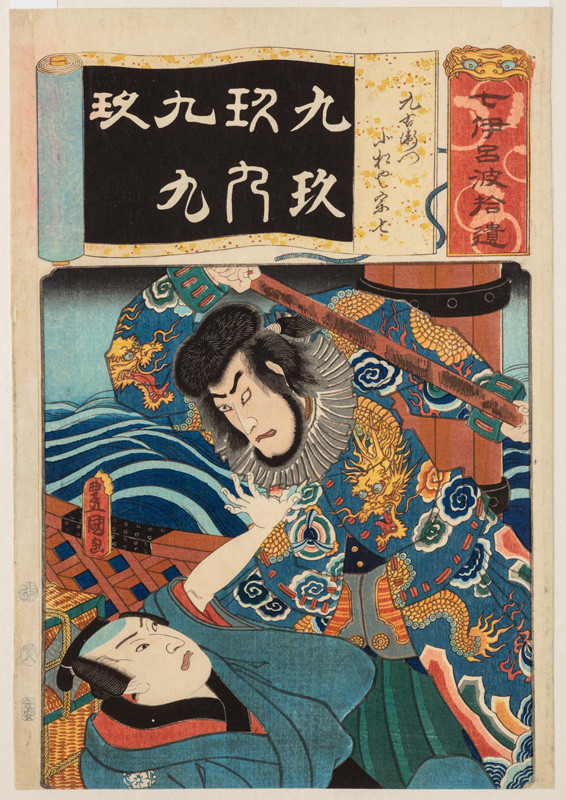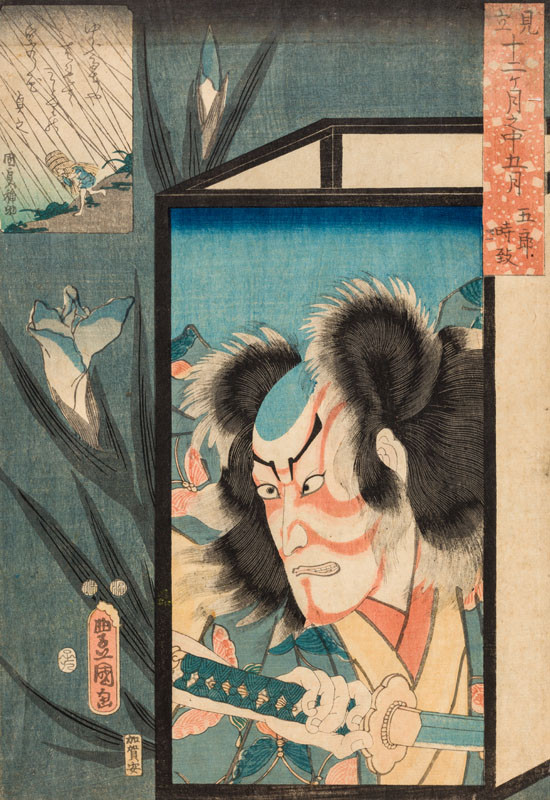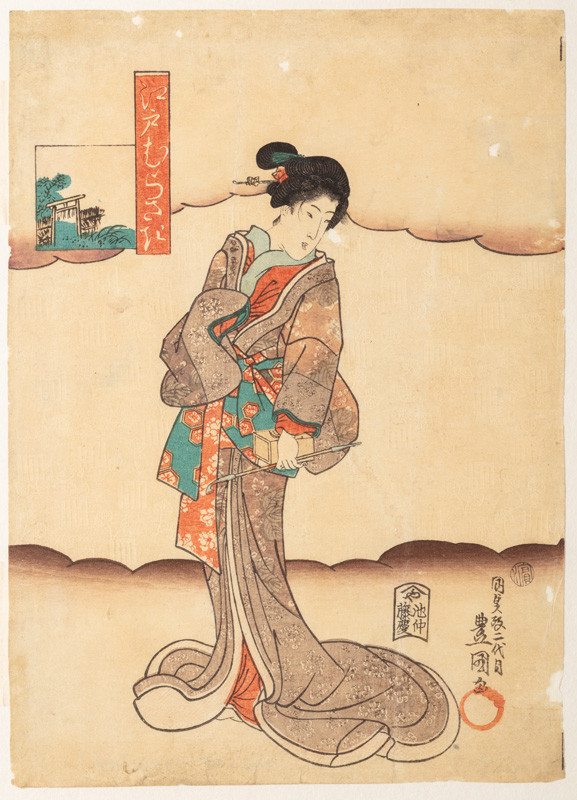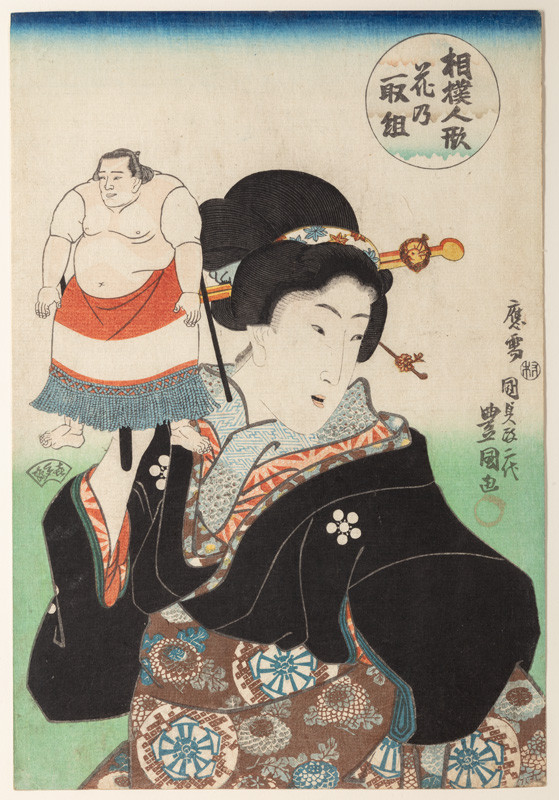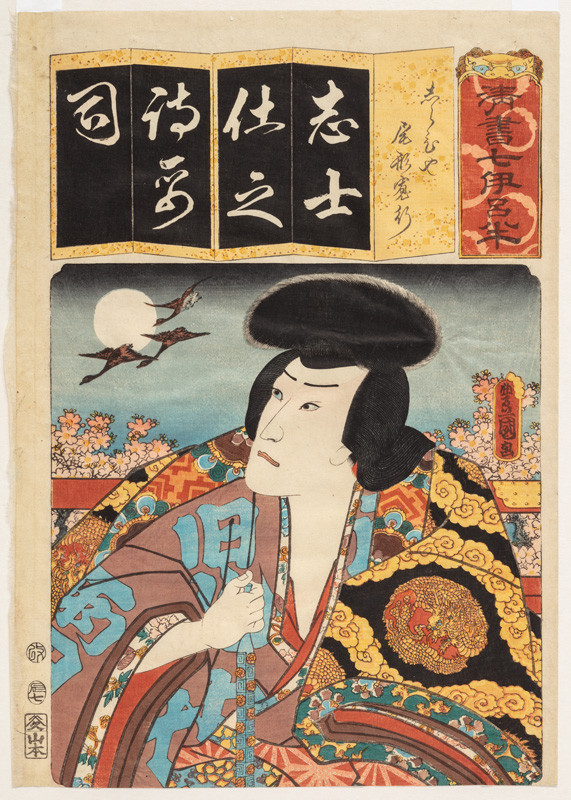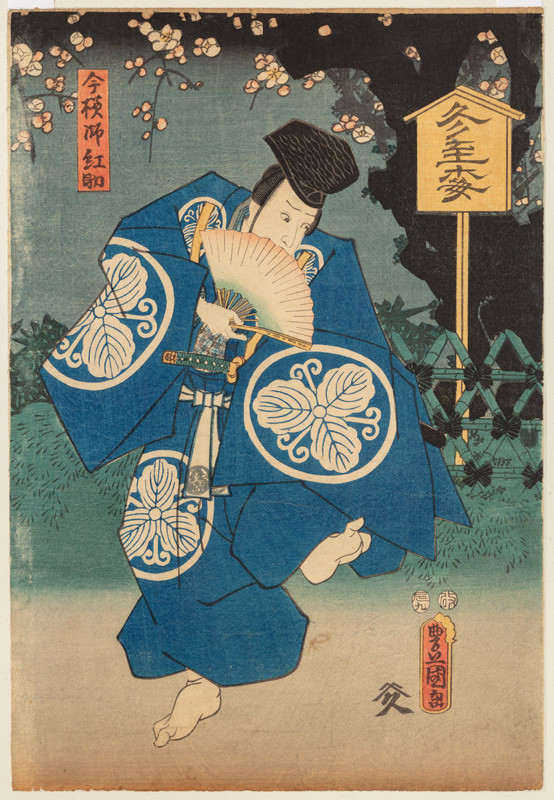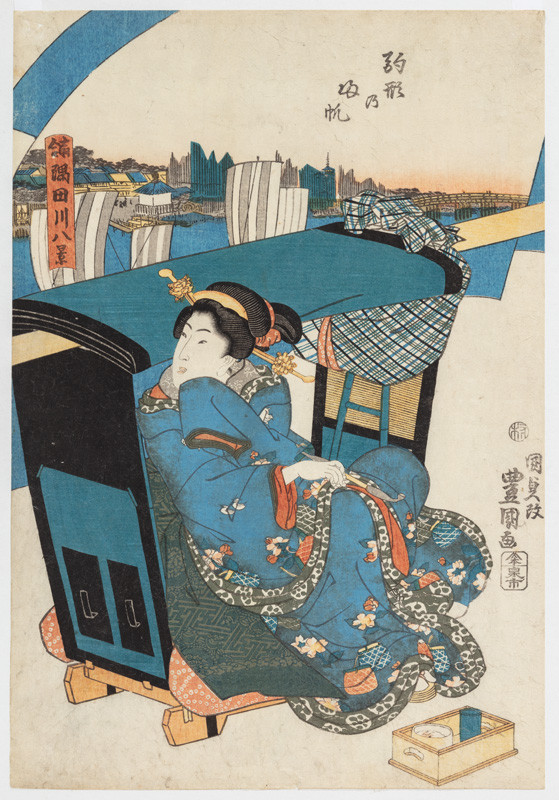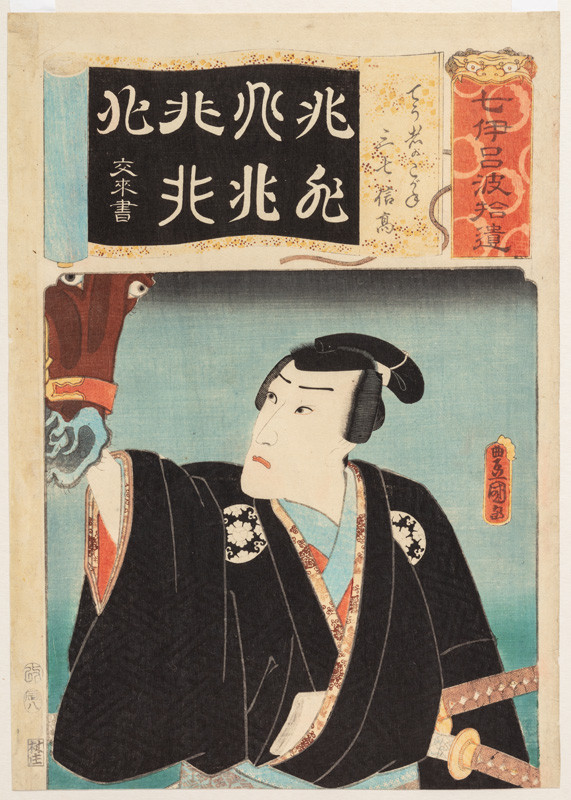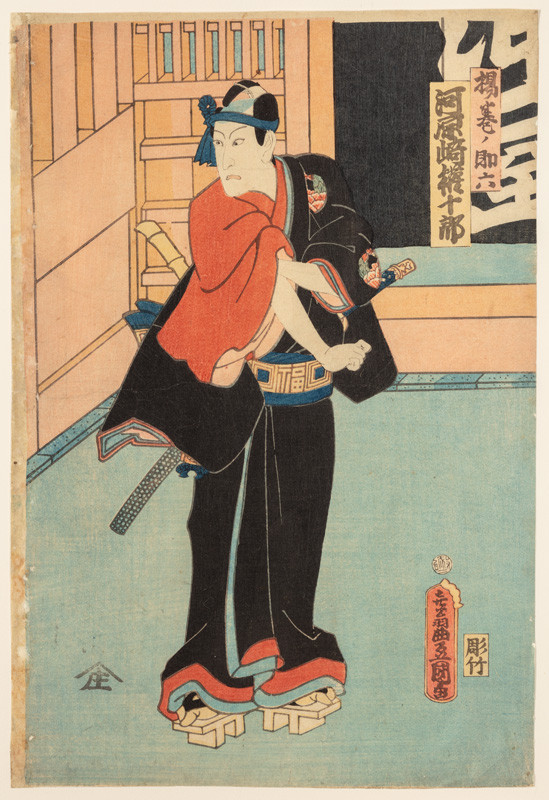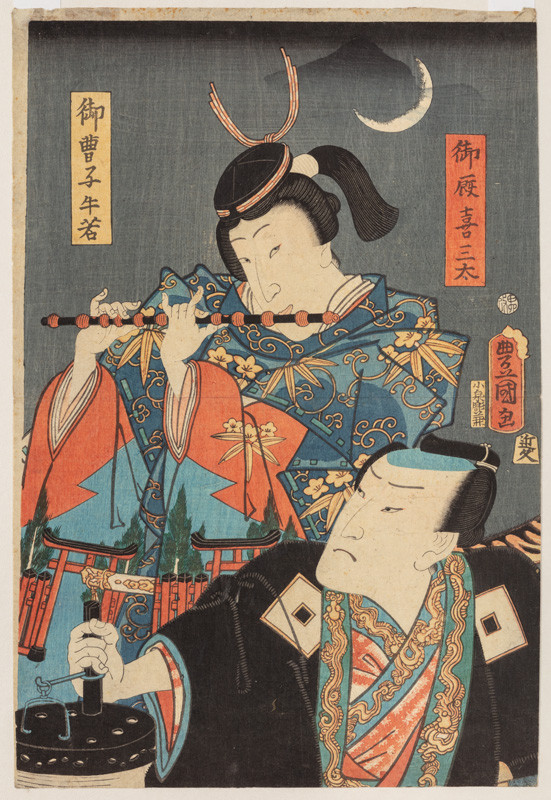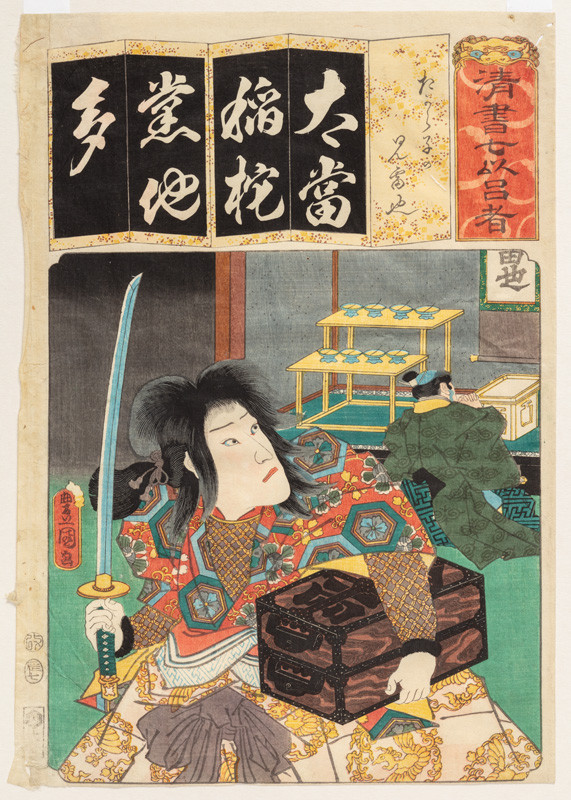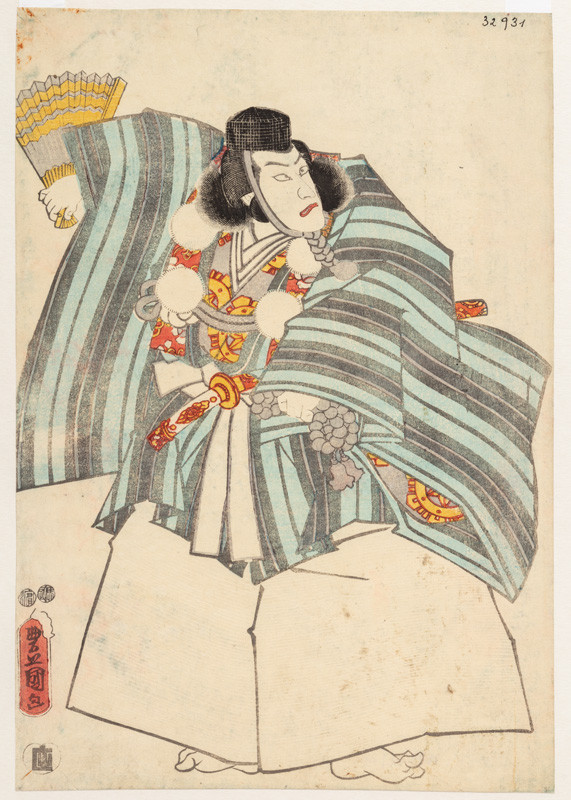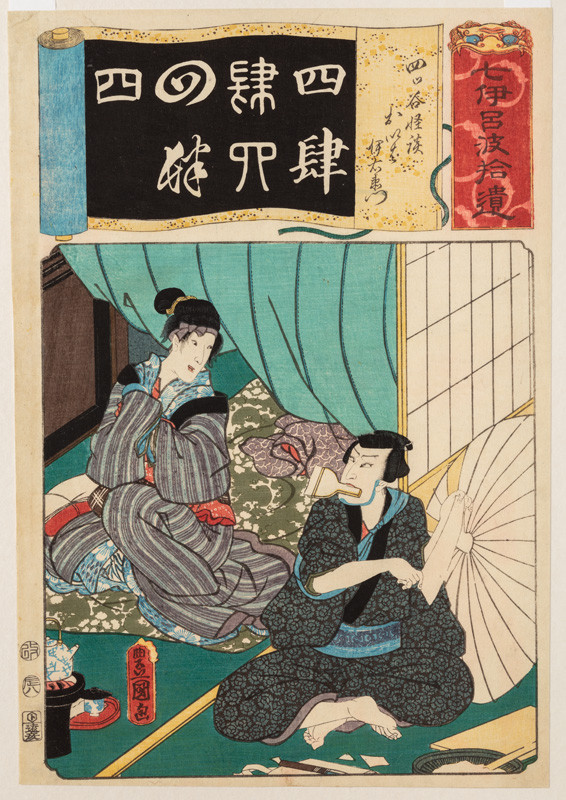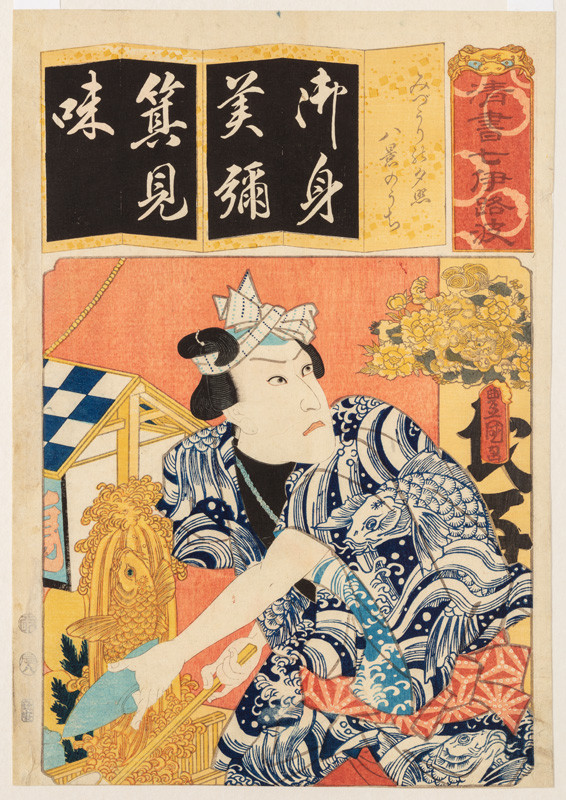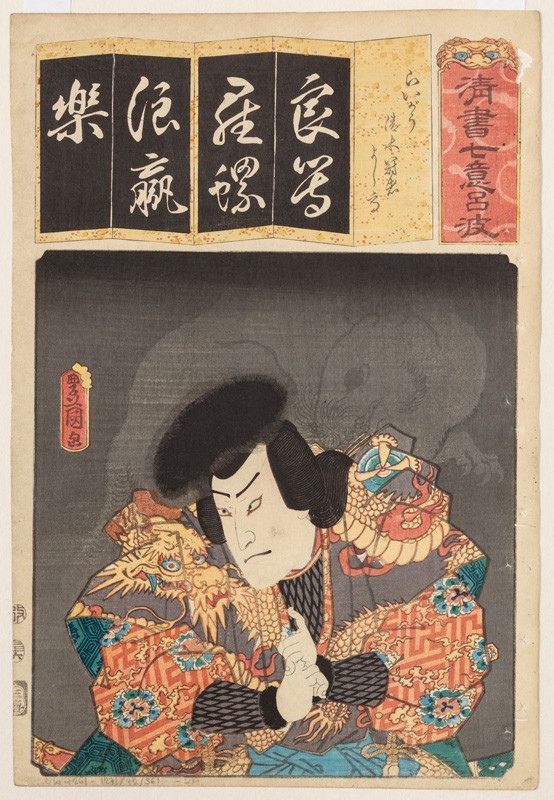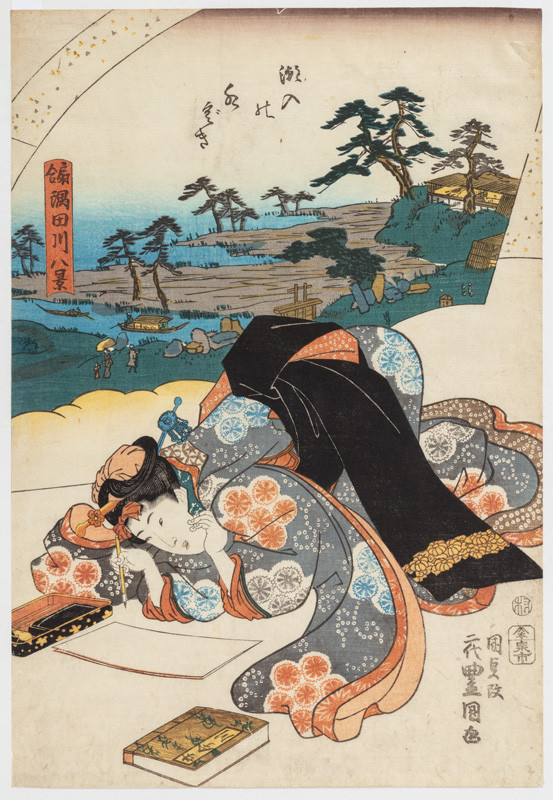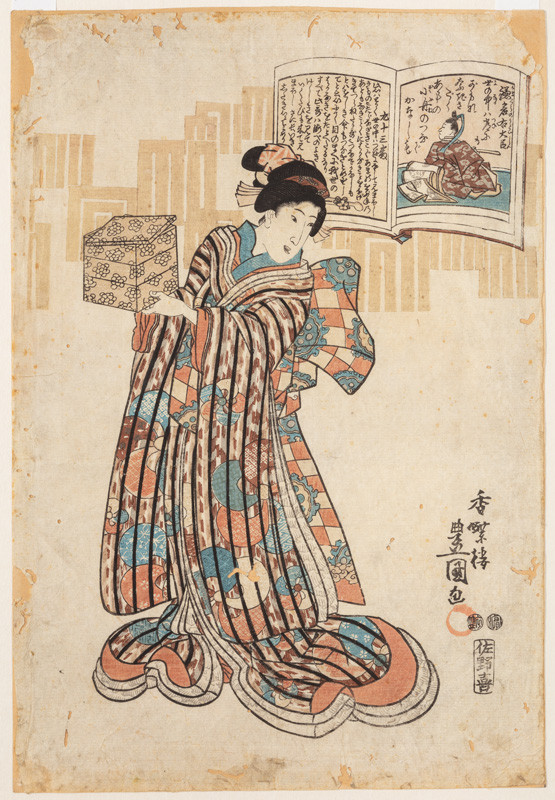
The sheet bears the stamp of the publisher (Sanoki) and the censor’s seals Hama and Kinugasa. In the 1840s, Kunisada did two series with the theme of the classic collection One Hundred Poems by One Hundred Poets (Hyakunin ishshu). According to legend, it is a selection from the rich tradition of Japanese quintet poems waka by the poetry arbiter Fujiwara no Teika, who mentioned the collection in his diary in 1235. The collection Hyakunin ishshu was very popular in the Edo period. It was published in many editions of books of woodblock prints starting in the early 17th century and many people knew its poems by heart. It even became a card game, which is played on New Year’s Day. In Kunisada’s concept, the portraits of the poets and their poems in open books at the top right corner are accompanied by figures of beauties dressed in fashionable kimonos. Under the open book motif in the second series dedicated to the collection Hyakunin ishshu, Kunisada added a decorative band with the geometric pattern genjimon, whose 54 variants were originally formed to designate the 54 chapters of the Tale of Genji. The author of reproduced poem No. 93 from the collection Hyakunin ishshu is Minamoto no Sanetomo, called the Kamakura Master from the Right (Kamakura udaijin), a representative of the military aristocracy that seized power in 1185, leaving the Kyōto court aristocracy with only nominal functions and full pensions. The young son of the first Kamakura shōgun Yoritomo, however, knew nothing of the future development – he engaged in poetry and let the wise old man Teiko correct his poems. He died young at the hands of an assassin, though his poem speaks about his desire to live a long and happy life with the same drive and naturalness as the fishermen pulling their boats across the shallow water. The text reads as follows: I wish the world to continue / and we did not know the grief / the fishermen pull / their boats by ropes / across the shallow seascape. Jo no naka wa – tsune ni mo ga mo na – nagisa kogu – ama no obune no – cuna de kanashi mo. (See Helena Honcoopová, Kunisada, Praha 2005, p. 96)

